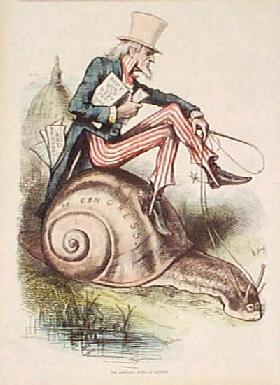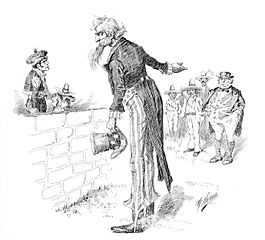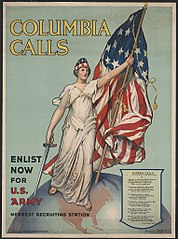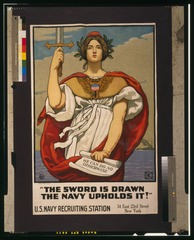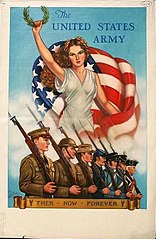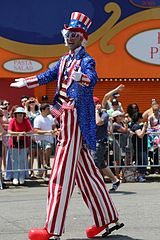
Uncle Sam with his stove pipe hat, white hair, lanky body, and red and white striped pants remains a visual symbol of the United States. He first appeared during the War of 1812, and received his nickname on Sept. 7, 1813. At the time, he was overshadowed by a figure we no longer think about: Brother Jonathan.
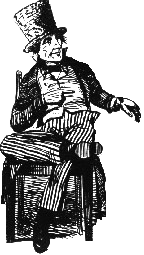
Brother Jonathan was a braggart and a trickster. He was sly, bigoted, and cunning. His name derived from two sources. In England, the name was a term of derision. The name Jonathan was also common in New England. Either way, the British used the term to refer to all New Englanders. Americans didn’t like being called jonathans until they won their revolution. The scrappy underdogs were free, and Brother Jonathan took on more positive connotations as a sort of independent entrepreneur.
But Brother Jonathan was only a regional symbol, and as the United States changed, his brashness and bigotry were less welcome.
Uncle Sam
Brother Jonathan was superceded by Uncle Sam, a home grown symbol of patriotism and unity. According to legend, Uncle Sam appeared in the War of 1812. The United States was fighting Britain again, and the American army needed supplies.
Samuel Wilson, a meatpacker in Troy, New York, shipped barrels of beef to the army. He stamped each barrel with the letters “U.S.” Troops began calling the beef barrels “Uncle Sam’s.” For a time, Uncle Sam and Brother Jonathan co-existed.
The United States changed during the Civil War. The Federal government became stronger. People wanted a reliable image for the country. Thomas Nast, prolific cartoonist, popularized what became the modern image of Uncle Sam. Nast gave him the white beard and striped trousers.
Political cartoonists used Uncle Sam to make their point. Below are two cartoons by Thomas Nast. One titled The Lightning Speed of Honesty shows Uncle Sam riding the snail that was the 45th Congress. In the other, Uncle Sam explains to Spain that everyone is against them in the Spanish-American War.
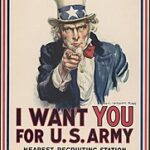
In the early 20th century James Montgomery Flagg created the most well-known image of Uncle Sam with an army recruting poster. Looking straight at the viewer, Uncle Sam announced “I want You for the U. S. Army.”
He wasn’t the only one. Columbia, the female image of America, appears on recruting posters, and also advertisements for Columbia records. After Columbia Pictures recruited her as their symbol, Columbia lost status. But in 1938 she was back recruiting troops for a new war.
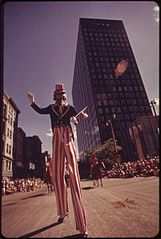
Today, we seldom see Columbia, but Uncle Sam continues to stride down parade routes, often using stilts to enhance his height. He smiles. He waves. He remains a national symbol.
Mermaid Parade 2013 by Richie S.
Brother Jonathan
Uncle Sam Riding a Snail by Thomas Nast, 1877
Spanish-American War Cartoon
James Montgomery Flagg. I Want You for the U. S. Army, 1917
Columbia Calls, 1916
The Sword is Drawn, The Navy Upholds It, 1917
World War II Recruiting Poster, 1938
Stilt Walking Uncle Sam, 1973. Public Domain.
Adee Braun. “Before America Got Uncle Sam, It Had to Endure Brother Jonathan.” Atlas Obscura. July 4, 2019.

Sandra Wagner-Wright holds the doctoral degree in history and taught women’s and global history at the University of Hawai`i. Sandra travels for her research, most recently to Salem, Massachusetts, the setting of her new Salem Stories series. She also enjoys traveling for new experiences. Recent trips include Antarctica and a river cruise on the Rhine from Amsterdam to Basel.
Sandra particularly likes writing about strong women who make a difference. She lives in Hilo, Hawai`i with her family and writes a blog relating to history, travel, and the idiosyncrasies of life.

